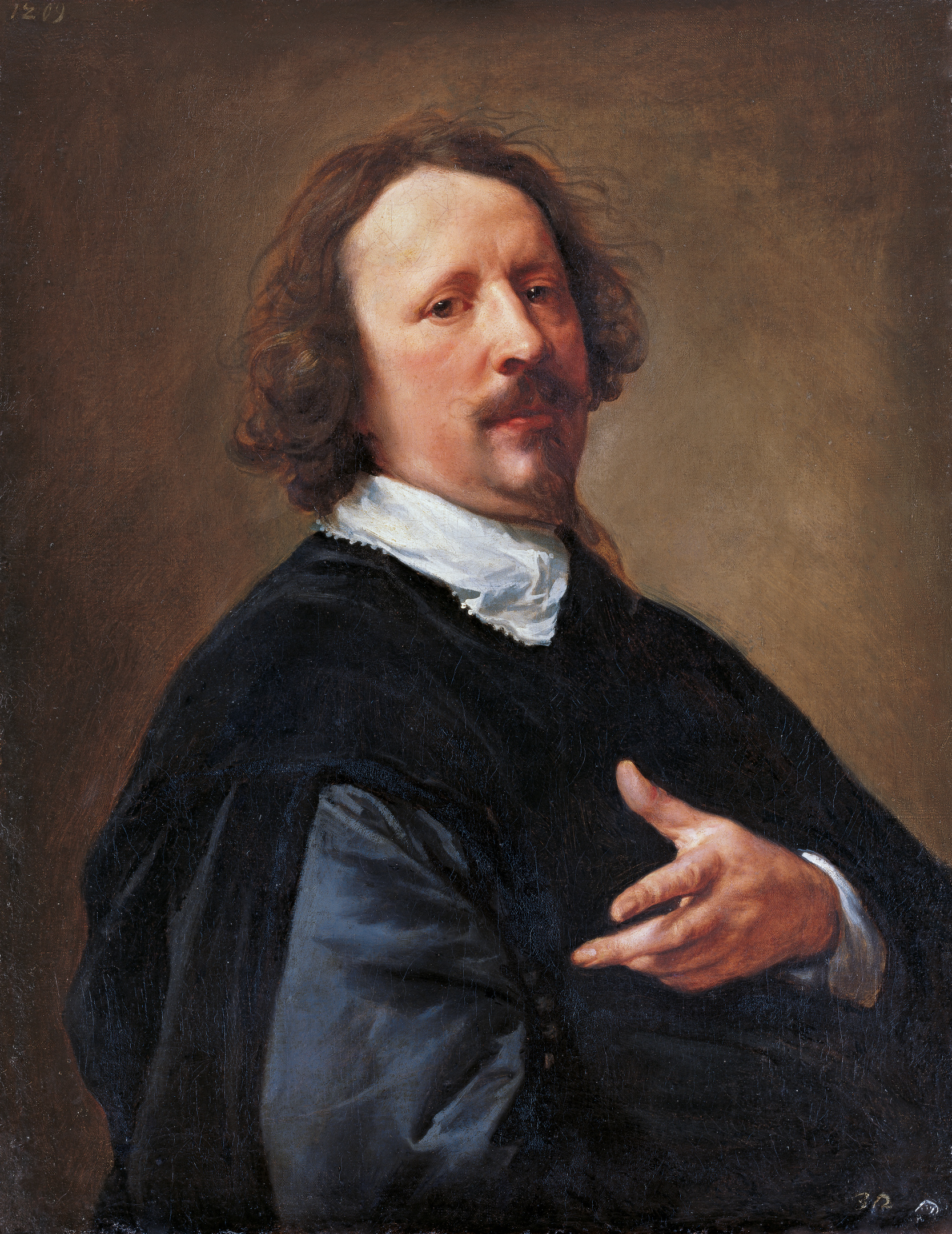
Portrait of Peeter Stevens, 1627
Four hundred and thirteen years ago two giants of art were born about three months apart— Velazquez, who was born in June and Anthony Van Dyck, who was born on this day. Child prodigy extraordinaire, he was already painting at a high level in his early teens, and by nineteen he was already Rubens' top assistant. Genius of this kind is rather difficult for most of us to really comprehend, and we can safely assume by the confidence in his early self-portraits how cocky he must have been. Still, even he learned a great deal working for a boss like Rubens, the multilingual scholar who made composition and colour seem like no sweat at all. Rubens would have instilled a deep understanding of skin tones and anatomy that would raise Van Dyck to the next level. I remember reading the story once of how while the master Rubens was out of the studio meeting aristocratic clients, the workshop boys were goofing off and someone got pushed into one of the paintings, smearing it as it was still not dry. As the story goes, the group unanimously decided Van Dyck should repaint the area without telling the master before he returned, and so Van Dyck dutifully repaints it as flawlessly as he can, stunning the group. When master Rubens arrives from his duties, he looks at the painting and walks away, not noticing anything unusual. It's a great story, whether apocryphal or not, and it shows just how much Rubens relied on his young assistant.
What is curious about Van Dyck is how while Rubens loved art history, Van Dyck was not quite as thrilled about it. He did the usual tour of Italy like all artists did, and there was only one who really caught his eye the most— Titian. I don't really see the connection between their styles or what Van Dyck saw in him, but he travelled all over Italy trying to find as many Titians as he could to study. Perhaps it was a warmth that may have been lacking in his native Flanders.
What makes Van Dyck truly unique from Rubens and most other painters was his portraiture. Wisely, Rubens discovered this early and encouraged him to pursue this direction (although others think he saw Van Dyck as a future rival and hoped he would avoid the historical genre that Rubens monopolized) as he knew this would prove to be lucrative and rewarding for the young Van Dyck. And so he did. Van Dyck's output as an artist is just as mind-blowing as his quality, producing several hundred paintings in London alone. His use of darks was so rich and deep that a color was named after him, Van Dyck Brown.

Portrait of the painter Caspar de Crayer, 1630
Van Dyck inherently understood facial expression arguably better than any artist who ever lived. In the above painting notice how the gentle glow of the eyes seduces us...a subtle gray with reflected light just below the lower lid. The eyes are always the most important element of the face for Van Dyck, and he went to great lengths to paint them with more attention than anything else. While the lips are equally important, if not more so for facial expression, Van Dyck made sure the mouth revealed the sitter's temperament...but the eyes...windows of the soul. He knew this is the first area we connect with in a portrait. And even more when the sitter is looking directly at us. What makes Van Dyck pure poetry is how he created those windows to the soul, how he made the aristocratic vulnerable and human, even fragile at times. The graceful hand gestures that permeate all of his work not only add grace to his sitters, but also work as both symbolic of the personality and a clever compositional framing device.

Thomas Chaloner, 1637
Here we see a more cynical man, this time the hand is pointing to his sword, and he looks off into the distance. The lacework around his neck seems not a challenge for Van Dyck, and by doing so it reinforces the prestige of the sitter in a way that would make him look very different without it. Van Dyck chooses to split-light the background, possibly to show the duality of this person's nature, but also for visual interest as the left shoulder has a warm glow behind it. The silky reflections of the robe are also given due attention.

Selfportrait, 1640
Click here for zoomable view at Sotheby's.
This is Van Dyck's last self-portrait, done a year before his death. I show this work to demonstrate the summary of his genius, the supreme confidence, brilliant use of grays, and broad lighting that reveals his own character as a painter that became a sort of royalty himself. Virtually everything you could want to know about portraiture is here. Although it makes you wonder how someone who made a career of painting royalty would have painted the poor, it is a crime that history cannot answer, unfortunately. However, there is one example below that I found:

Study of a man with a grey beard
Click here for zoomable version at Whitfield.
This haunting face of an old man, bathed in a soft warm light with sweeping brushstrokes is breathtaking. It does not get any better than this, folks. Van Dyck has captured the soul of this poor old man. Completely. Absolutely.
Comments
Post a Comment